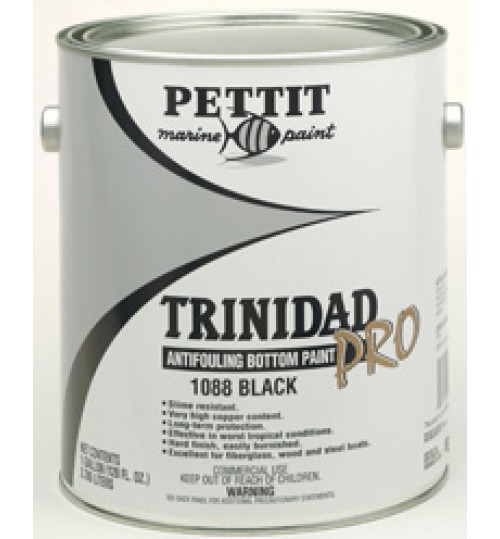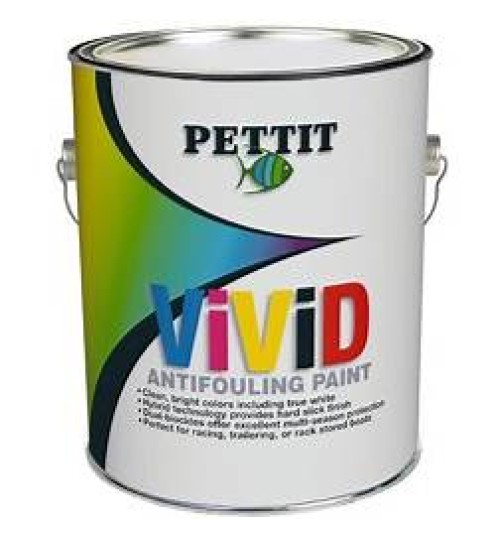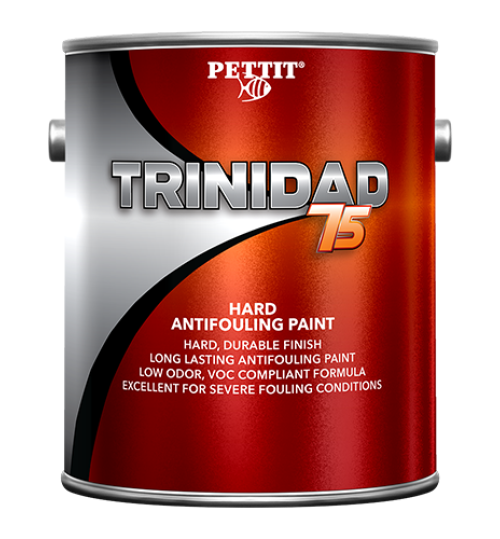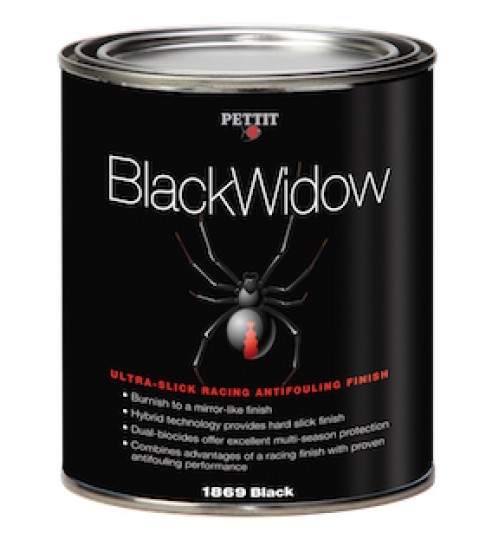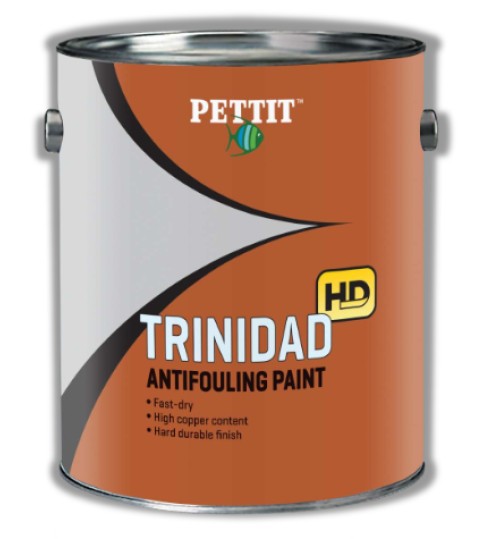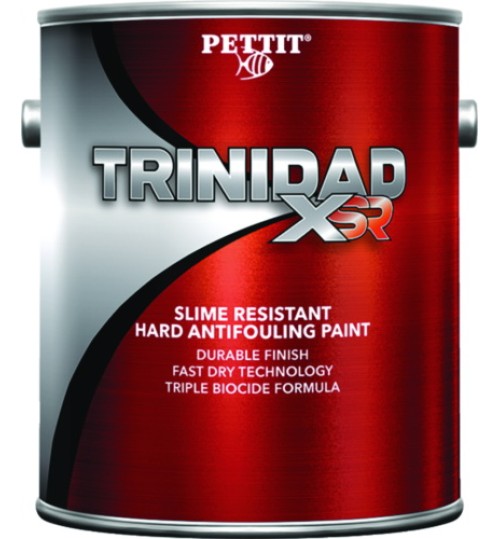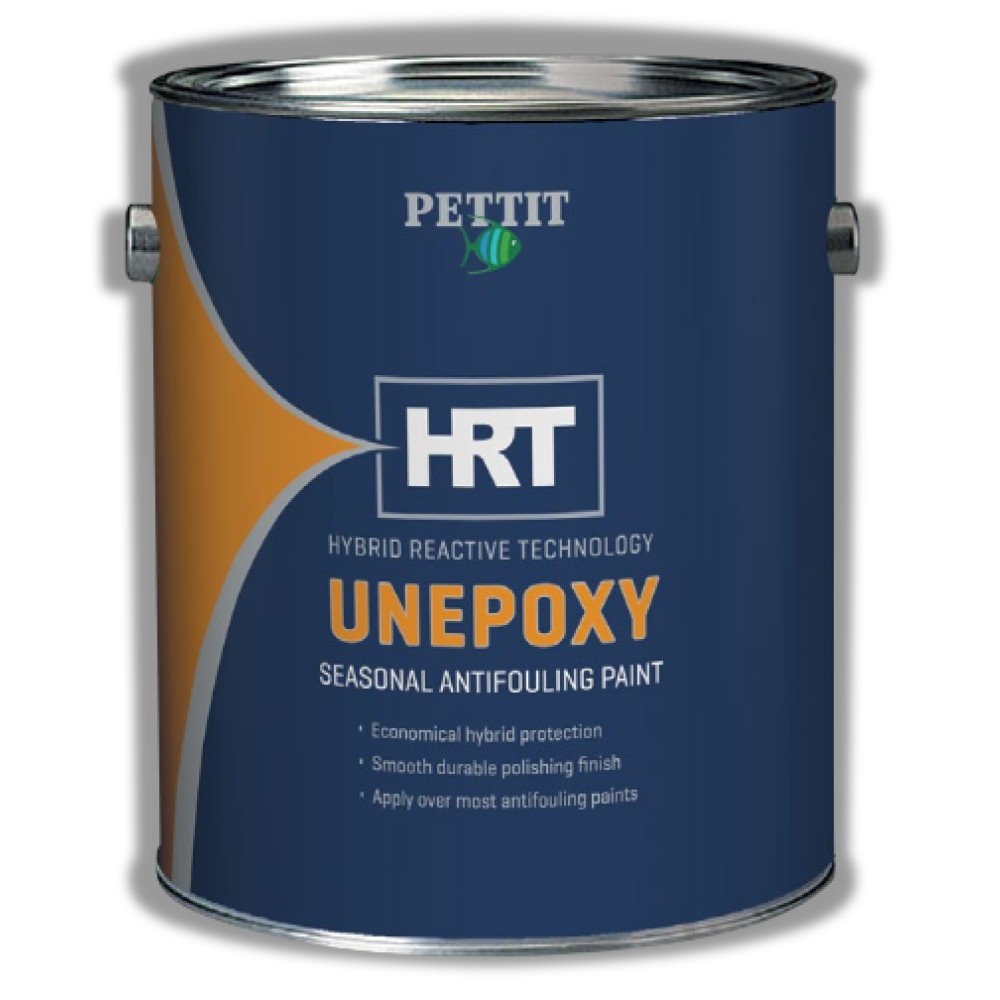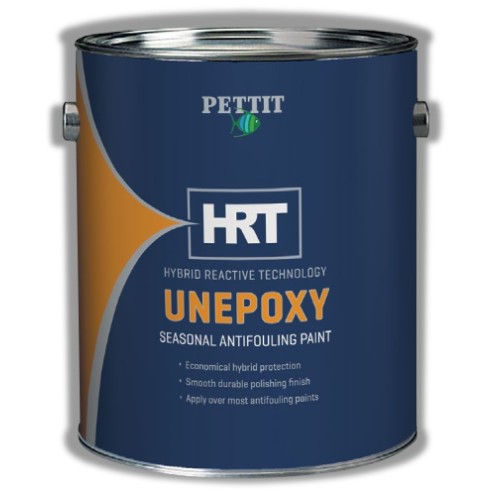
Unepoxy HRT, by Pettit
-
Boat Bottom Paint
- Top Performing Bottom Paint
- Self-Polishing-Ablative Bottom Paint
- Hard Bottom Paint
- Hybrid Bottom Paint
- Water Based Bottom Paint
- Aluminum Safe Bottom Paint
- Bottom Paint Primers
- Specialty Marine Coatings
- Outdrive Paint
- Sea Hawk Paints
- Blue Water Bottom Paints
- Interlux Bottom Paint
- Pettit Bottom Paint
- Bottom Paint Remover
- Aquagard Bottom Paints
- Cleaners-Reducers-Solvents
- Boat Paint
- Boat Zincs
- New Items and Specials
- Boat Bottom Paint3
- Fiberglass and Gel Coat Repair
-
Topside Boat Paint
- Above or Below the Waterline
- Aluminum Boat Paint
-
Awlgrip Marine Paint
- Awlgrip Polyester Urethane Topcoat
- Awlcraft 2000 Acrylic Urethane Topcoat
- Awlgrip Awlcraft® SE Topcoat
- Awlgrip HDT
- Awlcraft 3000
- Awlgrip Converters
- Awlgrip Reducers and Activators
- Awlgrip Primers/Sealers
- Awlgrip Fairing/Surfacing
- Awlgrip Awl-Prep Wipe Down Solvents
- Awlgrip Corrosion Inhibiting Surface Treatments
- Awlgrip Brightwork, Varnish, Interior Wood
- Awlgrip Auxiliary Products
- Awlgrip Maintenance Products
- Camouflage Boat Paint
- Blue Water Topside Paints
- Duralux Marine Paints
- Marine Enamels
- Interlux Topside Paint
- Pettit Easypoxy
- Adhesives and Sealants
- Teak Oil and Wood Restoration
- Boat Paint Supplies
- Resins
- Cleaners and Polish
- Manufacturers
- Propeller and Running Gear Coatings
Your shopping cart is empty!
Product Description
Pettit Unepoxy HRT seasonal antifouling uses the latest technology available to create a hybrid paint film strong enough to handle the tough marine environment without building up over time. Hybrid Reactive Technology features high density biocide utilization to maximize effectiveness by using biocide more effectively along with film modifiers to reduce yearly build-up, maintain uniform color consistency, and lower weight while providing a smoother finish than traditional paints. It is a dependable antifouling paint formulated to provide outstanding protection at a very affordable price. Its smooth durable finish is able to withstand beaching, trailering, and season long abuse.
Key Features:
- Smooth durable polishing finish
- Economical hybrid protection
- Compatible over most bottom paints
Don't forget to check the Pettit Bottom Paint Compatibility Chart!
*This Item Ships From South Florida – Click to See Estimated Transit Times

IMPORTANT **Do not apply Unepoxy HRT on aluminum hulls or outdrives.**
Application Systems and Tips
Unepoxy HRT is easily applied by brush, roller or spray. When rolling use only a high-quality short nap (maximum 3/16” nap) roller cover. Apply using thin coats. For the smoothest possible finish: Thin the paint approximately 5 - 10% with 120 Brushing Thinner.
Previously Painted Surfaces: To paint old hard and ablative antifoulings, thoroughly wipe down the surface with 120 Brushing Thinner, paying particular attention to waterline areas, then sand painted surface with 80 grit sandpaper. Old tin or copper copolymers or Teflon based antifoulings should be sanded thoroughly with 80 grit sandpaper to remove the chalky outer surface, wiped clean, apply 1 coat of Unepoxy HRT. Soft, sloughing antifoulings should be removed before applying Unepoxy HRT.
Bare Fiberglass: All bare fiberglass, regardless of age, should be thoroughly cleaned with 92 Bio-Blue Hull Surface Prep or de-waxed several times with Pettit D-95 Dewaxer.
Sanding Method – Sand the hull thoroughly with 80-grit sandpaper to a dull, frosty finish and rewash the sanded surface with 120 Brushing Thinner to remove sanding residue. Apply two thin coats of Unepoxy HRT, following application instructions. Careful observation of application instructions will help ensure long-term adhesion of this and subsequent years’ antifouling paint.
Non-Sanding Method -Thoroughly clean, de-wax and etch the surface with 92 Bio-Blue HullSurface Prep using a course Scotch-Brite pad. Thoroughly rinse all residue from surface and let dry. Then apply one coat of Pettit 4700/4701 High Build Epoxy Primer. Consult the primer label for complete application and antifouling top coating instructions. Apply two thin coats of Unepoxy HRT.
Barrier Coat: Fiberglass bottoms potentially can form osmotic blisters within the gelcoat and into the laminate. Prepare the fiberglass surface as mentioned above (sanding method) then apply two -three coats of Pettit 4700/4701 High Build Epoxy Primer or Pettit Protect 4100/4101 White High Build Epoxy Primer per label directions. Apply two thin coats of Unepoxy HRT. See Technical Bulletin TB-1000 Gelcoat Blister Repair and Prevention Specification for detailed instructions
Blistered Fiberglass: See Technical Bulletin TB-1000 Gelcoat Blister Repair and Prevention Specification for detailed instructions.
Bare Wood: Bare wooden hulls should be sanded thoroughly with 80-grit sandpaper and wiped clean of sanding residue. A coat of 6627 Tie-Coat Primer thinned 25% with 97 Epoxy Thinner should be applied directly to the bare wood. Allow drying 4 hours and then applying two un-thinned coats of UnepoxyHRT per instructions. Existing, hard antifouling paint should bethoroughly sanded. If priming is necessary on bare wood spots, apply a touch-up coat of 6627 Tie-Coat Primerthinned 25% with 97 Epoxy Thinner to these areas. Then apply the subsequent coats of Unepoxy HRT.
Steel Hulls : Clean surface with 120 brushing thinner. Remove loose rust and scale fromthe metal surface, scrape, sandblast or wire brush to 2 - 3 mil profile. Blow off residuethen apply one or two coats of Pettit 6980 Rustlok Primer*followed by two coats of Pettit 4700/4701 High Build Epoxy Primer. Follow with Unepoxy HRT.
Underwater Metal Parts: Solvent clean, abrade to clean bright metal by sanding with 60-80 grit sandpaper, sandblasting or wire brushing. Apply 2 - 3 coats of Prop Coat Barnacle Barrier 1792 followed by 2 thin coats of Unepoxy HRT.
Maintenance: No antifouling paint can be effective under all conditions of exposure. Man-made pollution and natural occurrences can adversely affect antifouling paint performance. Extreme hot and cold water temperatures, silt, dirt, oil, brackish water and even electrolysis can ruin an antifouling paint. Therefore, we strongly suggest that the bottom of the boat be checked regularly to make sure it is clean and that no growth is occurring. Lightly clean the bottom with a sponge or cloth to remove anything from the antifouling paint surface. Cleaning is particularly important with boats that are idle for extended periods of time.
Click here to view Product TDS
Click here to view Product SDS
Finish: Flat
Solids by Volume: 42%
Solids by Weight: 58%
Coverage: 500 sq. ft/gal.
VOC: 475 grams/liter (as supplied)
Biocide: Cuprous Oxide… 23.7%
Flash Point: > 105°F
Application Method: Brush, roller, airless or conventional spray
Maximum Roller Thickness: 3/16”
Number of Coats: 1 minimum per season with additional coat at waterline
Wet Film Thickness: 3.5 mils
Dry Film Thickness: 1.5 mils
Application Temp: 50° F. Min. / 90°F.Max.
Thinner: 120 Brushing Thinner
Dry Time: Click here to view Product TDS

